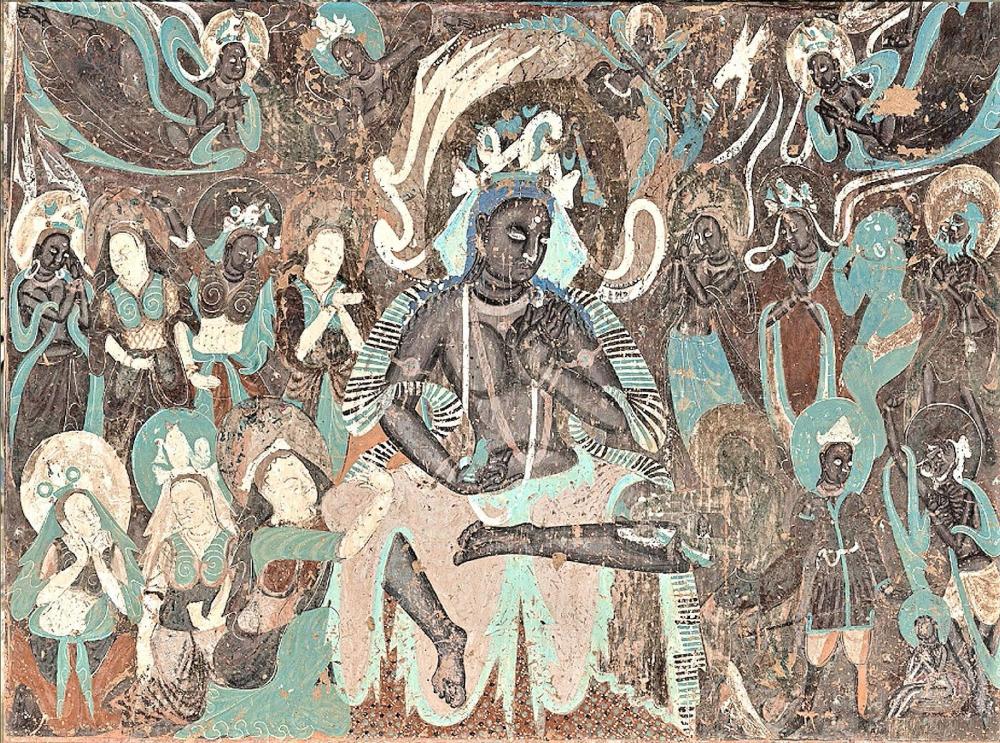敦煌市 (dūn huáng shì), Dunhuang is an oasis city in Gansu Province. It lies in the southern section of the silk road and the Great Wall passes by. It is probably the most important Buddhist site in China, with over 700 temples in caves, particularly the 莫搞窟 (mò gǎo kū), Mogao Caves which are highly decorated with Buddhist images, and which contained priceless Buddhist texts. A very important religious and cultural crossroads between east and west and the road from Tibet to Mongolia.
Buddhist image dated to c475 CE, Mogao Caves
“But what’s this got to do with my dinner?”, you rightly ask.
Well, there is an ingredient which I never associated with Chinese cuisine and which none of my Chinese friends has heard of. 小扁豆* (xiǎo biǎn dòu), literally ‘small, flat beans’, are Vicia lens, lentils and they are grown in the Dunhuang area.
The lentil originated in the Middle East and travelled to South and SE Asia and to Africa before extending its range to Europe, then the Americas. I’m guessing they migrated east along the Silk Road to Dunhuang.
These are a small greenish-brown variety.
Dunhuang Lentils
The few that are eaten in China mainly seem to go into porridge mixes with other grains and seeds. Of course I use them in more traditional western dishes such as lentil soup and stews and curries.
My friends are baffled by red lentils and, although I can source them, so far as I can tell, they are all imported from India, Pakistan or most frequently, Turkey.
Turkish Red Lentils
* You have to be careful with this name. 小便 is also xiǎo biàn but the tone on the second character is different – this means ‘urine’. A slip of tone and you might order ‘urine soup’.





